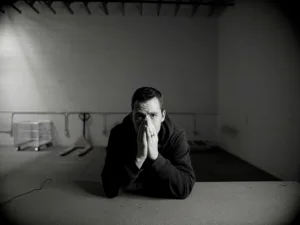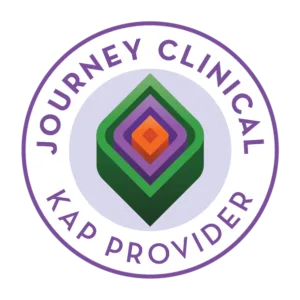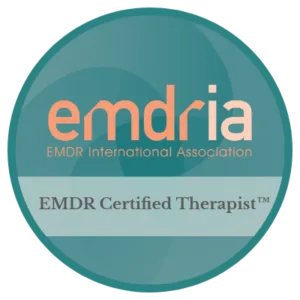Warning Signs: The Hidden Symptoms of Porn Addiction You Need to Know
Porn addiction is a topic many people don’t want to talk about but it affects more people than most of us realize. Lets face it, porn is everywhere these days; porn sites, reddit, twitter, Tik ToK. Maybe you’ve wondered, “Am I addicted to porn?” or asked “what are the symptoms of porn addiction?” In that case, this article will help you identify the warning signs of problematic pornography use (PPU) and understand why it matters.
“We are seeing an increase in young and adult men who have been struggling with their porn use for years before they seek help. We want guys to know they don’t need to suffer in silence; you are not alone. Seeking support means you are facing problems head-on, which is a sign of bravery and strength,” notes Stephen Rodgers, LCSW, therapist at Denver Men’s Therapy.
At Denver Men’s Therapy, we provide therapy designed for men struggling with porn addiction. Our highly trained and skilled therapists understand the unique challenges men face when dealing with unwanted patterns around pornography use. We offer a safe and private place to address these concerns through specialized treatment approaches. We focus on providing male-friendly therapy that helps you overcome challenges while capitalizing on your strengths.
We place no judment on porn or porn use. Pornography can be part of a healthy sexuality. However, it can also become unhealthy and destructive. It is also harmful when someone is exposed to porn at an early age.
What Is Porn Addiction?
Problematic pornography use (PPU), sometimes referred to as Internet Pornography-Viewing Disorder (IPD) or as “porn addiction,” represents a pattern of behavior where an individual experiences diminished control over their pornography consumption despite negative consequences. To understand this phenomenon more thoroughly, we need to examine how experts currently classify it.
In clinical settings, PPU is not yet formally recognized as a standalone disorder in the Diagnostic and Statistical Manual of Mental Disorders (DSM). However, the International Classification of Diseases (ICD-11) includes Compulsive Sexual Behavior Disorder, which can encompass problematic pornography use when it meets specific criteria. This classification falls under impulse control disorders rather than addictions per se.
The neuroscience behind problematic pornography use helps explain why it can be so challenging to overcome. When someone engages with pornography, particularly in a compulsive manner, their brain’s reward system activates in ways similar to what occurs with substance use. Specifically, research using functional magnetic resonance imaging (fMRI) has shown increased activity in the ventral striatum—a key region involved in processing rewards—when individuals with PPU are exposed to cues that predict erotic content.
This heightened brain response occurs primarily during the anticipation phase rather than during the actual viewing of pornographic material, suggesting a dissociation between “wanting” (anticipation) and “liking” (the experience itself). This pattern mirrors what researchers observe in other addictive behaviors, where the anticipation of reward becomes increasingly powerful even as the actual enjoyment may diminish over time.
The Hidden Symptoms of Porn Addiction: Why Porn Addiction Is Bad
Understanding the symptoms of porn addiction requires looking the whole person. These symptoms can be categorized into behavioral patterns, psychological and emotional states, relationship dynamics, and physical. Let’s explore each category in detail.
Behavioral Warning Signs: The External Manifestations
Behavioral symptoms are often the most observable symptom of porn addiction. These patterns reflect changes in how an individual organizes their time, responds to urges, and manages their daily responsibilities.
- Loss of control manifests as repeated unsuccessful attempts to stop or reduce pornography use despite the genuine desire to do so. This experience can be particularly distressing because it creates a disconnect between one’s intentions and actions. For example, an individual might set firm boundaries about not watching pornography during work hours, only to find themselves repeatedly breaking this commitment and feeling powerless to resist the urge.
- Ignoring daily responsibilities occurs when pornography viewing begins to take precedence over essential life activities. This symptom represents a significant shift in priorities, where academic, professional, or family responsibilities become secondary to pornography use. What might begin as occasional viewing can gradually expand until significant portions of the day are consumed by this activity. For instance, someone might start missing deadlines at work, canceling social engagements, missing classes, or neglecting household responsibilities to watch pornography instead.
- Tolerance is the need for increasingly intense stimulation to achieve the same level of arousal or satisfaction. This might look like spending progressively more extended periods viewing pornography or seeking out more extreme, novel, or harder-core content over time. This pattern occurs because repeated exposure to similar stimuli can lead to diminished neural responses, requiring greater stimulation to achieve the same effect. Stephen Rodgers, LCSW, adds “ Many guys express confusion and shame because they have viewed extreme porn that they otherwise would not watch. But because they have built a tolerance, their brain is seeking more stimulation.”
- Secrecy and defensiveness develop as individuals attempt to hide their porn use from others, often due to shame or fear of judgment. When questioned about their online activities or time spent alone, they may respond with unusual irritation, deflection, or outright lying. This secrecy can create significant internal conflict, as maintaining deception requires considerable psychological energy and often conflicts with personal values of honesty and integrity.
- Using pornography as a coping mechanism represents an attempt to manage difficult emotional states through external means. Rather than developing healthy strategies for processing depression, stress, anxiety, boredom, or loneliness, an individual may habitually turn to porn for temporary relief. “It’s very common for people experiencing a mental health issue like depression, anxiety, or trauma to develop an addiction as a maladaptive coping response,” explains Rodgers. Coping this way does not make the underlying issues go away. It also prevents learning more effective emotional regulation skills and leads to a cycle where negative emotions trigger porn use, which lead to negative emotions like guilt or shame.
Psychological and Emotional Symptoms of porn adddiction: The Internal Experience
The psychological symptoms of porn addiction involve internal experiences that may not be immediately visible to others but can significantly impact an individual’s well-being and functioning.
- The shame cycle describes a recurring pattern where pornography use generates intense feelings of guilt, remorse, or self-criticism. These negative emotions fail to prevent continued use and may even trigger additional viewing as a form of escape. This cycle can be particularly damaging to psychological health because it reinforces negative self-perception and creates a sense of helplessness. “The shame cycle can lead to negative beliefs about the self. It also makes asking for help that much more difficult for a lot of men,” notes Rodgers. The shame often extends beyond the behavior itself to encompass a more global sense of personal inadequacy.
- Preoccupation refers to intrusive thoughts about pornography that persist throughout the day, interfering with concentration, productivity, and presence in daily activities.
- Emotional instability manifests as mood swings that often correlate with patterns of pornography use and abstinence. Many individuals report increased irritability, anxiety, or agitation when unable to access pornography, responses that share similarities with withdrawal symptoms in substance use disorders. These emotional changes can disrupt relationships and daily functioning. For example, someone might become uncharacteristically short-tempered with family members when their usual viewing routine is interrupted.
- Mental fog describes difficulties with cognitive processes such as concentration, decision-making, and clear thinking. Some researchers hypothesize that this symptom of porn addiction may result from alterations in dopamine signaling associated with compulsive sexual behaviors, while others suggest it may stem from sleep disruption, psychological distress, or the cognitive load of maintaining secrecy. Regardless of the specific mechanism, many individuals report a subjective sense of diminished mental clarity and sharpness that improves with extended abstinence from pornography.
- Dissatisfaction with life encompasses a pervasive sense that life lacks meaning, purpose, or joy beyond the temporary pleasure of pornography. This symptom often includes feelings of regret about wasted time and missed opportunities.
Relationship and Sexual Health Red Flags: The Interpersonal Impact
Problematic pornography use can significantly affect intimate relationships and sexual functioning in ways that extend far beyond the moments spent viewing.
- Intimacy issues extend beyond physical sexual functioning to include forming relationships, emotional connections, vulnerability, and authentic sharing between partners. Pornography consumption, when extensive or secret, can create emotional distance in relationships. “Many of the guys we work with feel that after years of excessive porn use, which is often done in isolation, they struggle to develop the skills needed to form health social and romanitc connections. “Porn is “easy” relationships take work,” says Rodgers. Additionally, pornography often portrays sex as primarily physical rather than emotionally connected, potentially influencing viewers’ expectations and comfort with genuine intimacy. The energy devoted to maintaining secrecy around pornography use can further inhibit the openness essential for intimate connection.
- Declining sexual satisfaction occurs when real-life sexual experiences become less rewarding compared to pornography. This phenomenon may result from several factors. First, pornography offers unlimited novelty, variety, and specific stimulation tailored to individual preferences, creating expectations that real-life encounters may struggle to match. Second, porn is low effort; without the vulnerability, communication, and reciprocity that healthy sexual relationships require. Third, frequent masturbation to pornography may reduce sexual desire for partners through a process called sexual satiation.
Relationship strain encompasses the various ways problematic pornography use can create conflict, diminish trust, and damage communication between partners. When one partner discovers previously hidden pornography use, they may experience feelings of betrayal, inadequacy, or insecurity. Even when pornography use is known, disagreements about its appropriateness or impact can create ongoing tension. Additionally, the time, energy, and emotional investment directed toward pornography may leave less available for nurturing the relationship.
How to Stop Porn Addiction: A Step-by-Step Explanation of the Recovery Process
Addressing the symptoms of porn addiction will be unique to each person. The following steps represent evidence-informed strategies for creating meaningful change.
- Acknowledge the problem through honest self-assessment
The first step starts with recognizing your symptoms of porn addiction without minimization or rationalization. This step requires overcoming denial, a common psychological defense mechanism that protects us from uncomfortable truths. Effective self-assessment involves examining not just the behavior itself but its consequences across different life domains. Questions to consider might include: Has pornography use negatively impacted my relationships, work performance, or physical health? Do I experience distress when unable to access pornography? Have my attempts to control or reduce use been unsuccessful?
This acknowledgment process is foundational because it establishes the motivation necessary for the challenging work of behavior change. Research in addiction psychology consistently shows that recognizing the discrepancy between one’s values or goals and current behavior creates the internal tension that drives change efforts.
- Understand your triggers through systematic self-observation
Problematic pornography use typically occurs within patterns that include specific triggers—situations, emotional states, or thoughts that prompt the behavior. Identifying these triggers requires deliberate attention to the circumstances surrounding pornography use. Common triggers include:
- Emotional states like boredom, loneliness, stress, or anxiety
- Environmental cues such as being alone with internet access, particular locations, or times of day
- Physiological states, including fatigue or physical arousal
- Cognitive patterns like sexual fantasizing or ruminating on relationship problems
Keeping a trigger journal can be particularly helpful, noting the situation, thoughts, feelings, and urges that precede pornography use. This process creates awareness of previously automatic patterns and identifies specific points where intervention strategies can be applied.
- Create environmental barriers through intentional restructuring
Since easy access facilitates problematic use, establishing barriers can provide crucial space between urge and action. Effective environmental modifications might include:
- Installing content-blocking software on devices
- Using internet accountability tools that share browsing history with a trusted person
- Relocating computers to public areas of the home
- Switching to basic phones without internet capability during high-risk periods
- Establishing specific times when devices are powered down completely
These strategies work by increasing what psychologists call the “response cost” of the behavior, making it require more effort, planning, and deliberate action rather than occurring as an automatic response to triggers. Importantly, these barriers don’t remove choice but create space for more conscious decision-making.
- Develop healthy alternatives by cultivating competing behaviors
Reducing the symptoms of porn addiction is most effective when combined with increasing positive alternative activities that fulfill similar needs. Consider what functions pornography serves—perhaps temporary relief from negative emotions, a sense of excitement or pleasure, or escape from stress—and identify healthier ways to meet those needs. Effective alternatives might include:
- Physical exercise reduces stress and anxiety while improving mood through endorphin release
- Mindfulness meditation, which builds the capacity to observe urges without automatically acting on them
- Creative pursuits that provide immersion and satisfaction
- Social activities that fulfill needs for connection and positive emotion
- New hobbies that generate interest and focused attention
These alternatives work not just by occupying time but by activating reward pathways in the brain that can gradually replace the neurological reinforcement previously provided by pornography.
- Seek professional help from qualified specialists
Professional support can significantly improve outcomes, particularly for established patterns of problematic use. Therapists specializing in sexual health or addictive behaviors can provide:
- Evidence-based treatment approaches like Cognitive-Behavioral Therapy (CBT) or Acceptance and Commitment Therapy (ACT)
- Personalized strategies based on individual circumstances and needs
- Support for addressing underlying issues that may contribute to problematic use
- Techniques for managing urges, challenging unhelpful thoughts, and developing coping skills
- Accountability and guidance through the recovery process
When selecting a therapist, look for professionals with specific training in sexual health issues, addiction psychology, or compulsive sexual behavior, as general practitioners may have limited experience with these specialized concerns.
- Consider support groups to reduce isolation and share strategies
Connecting with others experiencing similar challenges provides unique benefits that complement professional treatment. Support groups offer:
- Validation that reduces shame and isolation
- Hope through witnessing others’ progress
- Practical strategies that have worked in real-world situations
- Accountability and encouragement during difficult periods
- Opportunities to help others, which reinforce one’s recovery
Options include both in-person groups (often organized through recovery organizations, religious institutions, or community centers) and online communities. When evaluating support groups, look for those that maintain a non-judgmental, scientifically-informed approach while providing genuine encouragement for change.
Porn Addiction Help: Understanding Available Resources
Various resources exist to support individuals seeking to address problematic pornography use. Understanding these options allows for creating a comprehensive support system tailored to individual needs.
Specialized therapists and counselors bring professional expertise to the recovery process. When seeking a qualified professional, consider looking for certifications from organizations like the American Association of Sexuality Educators, Counselors, and Therapists (AASECT) or the International Institute for Trauma and Addiction Professionals (IITAP). These credentials indicate specialized training in sexual health issues. Treatment approaches may include Cognitive-Behavioral Therapy (CBT), which addresses unhelpful thought patterns; Acceptance and Commitment Therapy (ACT), which focuses on mindfulness and values-based action; or psychodynamic approaches that explore underlying psychological factors.
Support groups provide community-based assistance through various models. Some follow 12-step principles similar to Alcoholics Anonymous, while others use different frameworks focused on behavior change, mindfulness, or faith-based approaches. Groups can be found through online directories, healthcare providers, or local community resources.
How to Know If You Have a Porn Addiction: A Framework for Self-Assessment
Determining whether pornography use has become problematic involves examining multiple aspects of the behavior and its impact. The following questions provide a structured framework for self-assessment:
Impact assessment: Has pornography use negatively affected important life domains? Consider relationships, work or academic performance, physical health, emotional well-being, and financial stability. Look for specific, concrete examples rather than general impressions.
Distress evaluation: Do you experience significant emotional or physical discomfort when unable to access pornography? This might include irritability, anxiety, restlessness, difficulty concentrating, or strong, persistent urges. These responses may indicate psychological dependence.
Control examination: Have you made multiple unsuccessful attempts to reduce or stop pornography use? The key feature here is the discrepancy between intention and action, repeatedly setting limits that you’re unable to maintain despite a genuine desire to do so.
Progression analysis: Has your pornography use changed over time in ways that suggest increasing intensity? This might include spending more time viewing, seeking more extreme content, or experiencing diminished satisfaction from material that was previously arousing.
Coping pattern identification: Do you consistently turn to pornography to manage difficult emotions rather than developing healthier coping strategies? This pattern can prevent the development of more effective emotional regulation skills.
Answering “yes” to multiple questions suggests patterns consistent with problematic use that warrant further attention. However, it’s important to note that self-assessment serves as a starting point rather than a definitive diagnosis. Professional evaluation can provide a more comprehensive assessment and recommendations.
Moving Forward: Understanding the Recovery Journey
Recovery from problematic pornography is a process rather than an event—a journey with both progress and setbacks that unfolds over time. The problem didn’t develop overnight, so it takes time and work to recover. This understanding can help maintain motivation and realistic expectations throughout the change process.
Many men who successfully address problematic pornography use report significant improvements across multiple life dimensions. These positive changes often include:
- Enhanced relationship quality, with greater emotional intimacy and communication
- Improved self-esteem and reduced feelings of shame
- Increased productivity and goal achievement
- More authentic connection with personal values
- Greater presence and engagement in daily life
- Improved sexual functioning and satisfaction with partners
It’s important to understand that these benefits typically emerge gradually rather than immediately. Early in recovery, some individuals experience a period of adjustment as the brain and body adapt to new patterns. This might include temporary intensification of urges, mood fluctuations, or sleep disruptions—phenomena sometimes called a “flatline” period in recovery communities.
Try this exercise:
- Reread the above bullet points on positive changes.
- Close your eyes and picture your future self experiencing these positive changes. What do you look like? What are you wearing? What is your posture? What emotions do you see on your face? What are your relationships like? How do you feel?
- As you picture your future self, what do you notice in your body as you are doing this exercise? Are you feeling energetic or positive? Take a few deep breaths and take a mental picture of your future self. Return to this image when you are feeling triggered or discouraged.
Conclusion
Porn addiction creates real challenges, but recovery is possible with proper support and dedication. Many men face this problem alone, but there is support. Finding a supportive, confidential, and experienced licensed therapist is key to recovery.
These warning signs can help identify harmful patterns early. Professional help makes the biggest difference in recovery outcomes, whether you notice early symptoms like increased viewing time or serious signs of relationship problems.
Getting help shows strength, not weakness. Each recovery step brings you closer to taking back control of your life and building meaningful connections with others, no matter how small it may seem. This perspective shift from shame to self-compassion creates a foundation for sustainable change by replacing self-criticism with a more supportive internal dialogue that can weather the inevitable challenges of the recovery process.
Are you considering taking steps toward change? Remember that even small initial actions can create momentum toward significant transformation over time. Reach out to Denver Men’s Therapy today.
FAQs
Q1. What are the early warning signs of porn addiction?
Early warning signs include spending increasing amounts of time viewing porn, failed attempts to cut back, hiding viewing habits from others, and feeling guilty but continuing to watch anyway. If you notice these behaviors, it may be time to seek help.
Q2. How does porn addiction affect relationships?
Porn addiction can significantly impact relationships by decreasing intimacy with partners, leading to comparisons between partners and porn performers, and causing social withdrawal. Many individuals report feeling less satisfied with their real-life relationships as their porn use increases.
Q3. Can porn addiction have financial consequences?
Yes, severe porn addiction can lead to financial problems. Some individuals deplete savings or retirement accounts, incur costs from purchasing premium content, experience lost income due to decreased work productivity, or face expenses related to therapy and rehabilitation.
Q4. What are the first steps to recovering from porn addiction? The first steps to recovery include acknowledging the problem, building a support system of trusted individuals, implementing digital wellness strategies like content filters, and seeking professional help. Cognitive-behavioral therapy (CBT) has shown particularly high success rates in reducing symptoms of porn addiction when combined with other interventions.
Q5. How does problematic pornography use (PPU) differ between men and women?
Research suggests that men report higher prevalence rates of PPU than women. Age-related patterns suggest that PPU tends to increase with age.
Q6. How has the accessibility of online pornography impacted its use and potential for problematic behavior?
The advent of high-speed internet has dramatically increased and eased access to a vast array of pornographic content. This easy access, often free or low-cost and anonymous, encourages more frequent use. Studies indicate a significant increase in visits to pornography websites over recent years, highlighting widespread engagement. The characteristics of online pornography, such as its ready availability and the sexual gratification derived from it, are considered key factors contributing to the development of Internet Pornography-Viewing Disorder (IPD).
Q7. Is problematic pornography use considered a formal addiction or disorder?
The classification of PPU is still a subject of debate among experts. While the term “pornography addiction” is commonly used, it is not yet formally recognized as a standalone disorder in major diagnostic manuals like the DSM. However, the concept of Compulsive Sexual Behavior Disorder (CSBD) has been included in the ICD-11 under impulse control disorders, which can encompass problematic pornography use.














